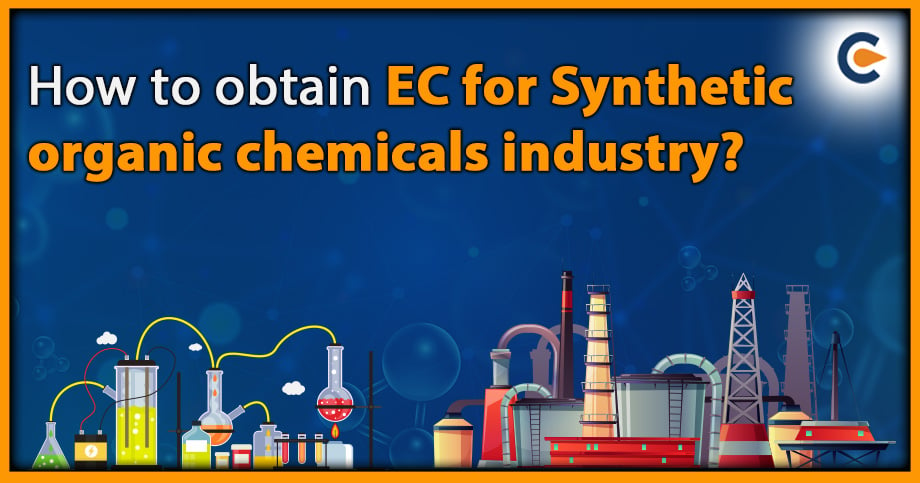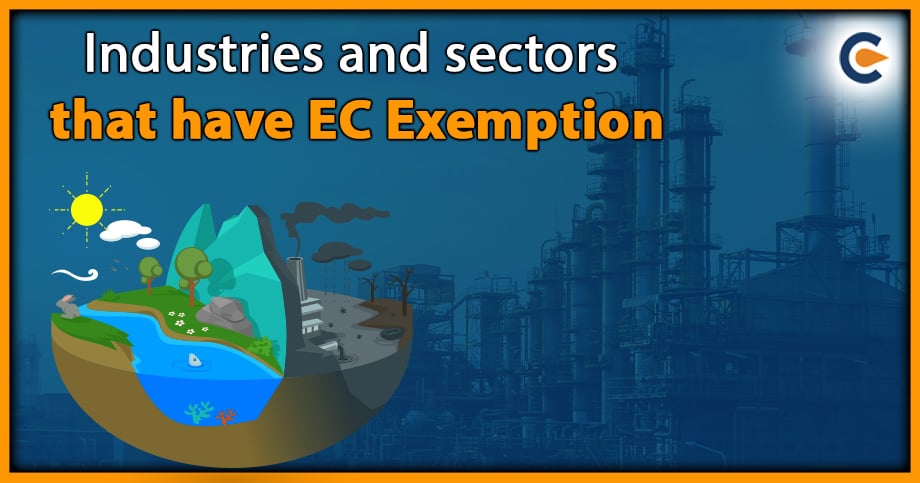The Synthetic Organic Chemicals Industry encompasses a variety of organic compounds, including dye and dye intermediates, bulk drugs and intermediates, and synthetic rubbers. The industry is concerned with processes and technologies for pollution control, operational aspects of Environmental Impact Assessments (EIA), model terms of reference (TOR) for the sector, cleaner production options, waste minimization techniques, monitoring of environmental quality, post-clearance monitoring protocols, and obtaining Environmental Clearances (EC) for Synthetic organic chemicals industry. The future competitiveness of India’s industry and its environmental impact depend on adopting energy and resource-efficient technologies by industries such as the Synthetic Organic Chemicals Industry.
Overview of EC for Synthetic organic chemicals industry
The synthetic organic chemical sector has a wide range of sub-sectors that include the following:
- Basic organic chemicals
- Dyes and dye intermediates
- Bulk drugs and intermediates
- Synthetic rubbers
- Other synthetic organic chemicals
- chemical intermediates.
Tools for environmental management for the EC for Synthetic organic
The tools used for preventive environmental management can be divided into three categories.
- The first group includes tools for assessment and analysis, such as risk assessment, life cycle assessment, total cost assessment, environmental audit/statement, environmental benchmarking, and environmental indicators.
- The second group comprises tools for action, such as environmental policy, market-based economic instruments, innovative funding mechanisms, EMS and ISO certification, total environmental quality movement, eco-labelling, cleaner production, eco-efficiency, industrial ecosystem or metabolism, and voluntary agreements.
- The third group consists of tools for communication, such as the state of the environment and corporate environmental reporting.
Categorisation of projects for the EC for Synthetic organic chemicals industry
The Environment Clearance process considers various factors that can impact both nature and humans, such as noise and pollution parameters and environmental components related to air, water, biological and land.
A comprehensive list of industries and projects is provided in the EIA Notification 2006. Projects are classified into two main categories based on their production or area under EIA Notification 2006:
- Category A: All projects falling under category A require Environment Clearance from the Central Authority.
- Category B: The SEAC further divides projects in category B into B1 and B2 categories. Projects in the B1 category require Environment Clearance from the respective State Authority, while those in the B2 category are exempted from submitting the EIA report.
Under Category A
Projects that involve new construction, expansion, or modernization and fall under Schedule under Category A are required to obtain environmental clearance. The Environment Clearance process for category A projects in the Synthetic organic chemicals industry is as follows:
- Project proponents need to submit an application that includes Form-1, a pre-feasibility report, and a draft term of reference.
- The Expert Appraisal Committee (EAC) then scrutinizes the application.
- The EAC communicates the terms of reference for the Environmental Impact Assessment (EIA) studies to the proponent and conducts scoping.
- The proponent then submits a draft EIA, summary EIA, or application for public consultation.
- The State Pollution Control Board (SPCB)/Pollution Control Committee (PCC) or any other public agency/authority engaged by the regulatory authority conducts a public hearing.
- The SPCB/PCC submits the proceedings of the public hearing to the EAC.
- After improving the EIA/Environmental Management Plan (EMP), the proponent submits the final EIA.
- The EAC conducts an appraisal.
- The Ministry of Environment and Forests (MoEF) decides whether to grant or reject the application.
Under Category B
Category B projects (including new projects/expansion/modernization) require environmental clearance. The Environment Clearance process for Category B projects in the Synthetic organic chemicals industry is as follows:
- The project proponent submits the application (including Form-1, pre-feasibility report, and draft Terms of Reference).
- Scrutiny of application is done by State-level Expert Appraisal Committee (SEAC)[1].
- SEAC scopes and communicates Terms of Reference for EIA Studies to the proponent for EIA preparation.
- Proponent then submits a Draft EIA/Summary EIA/Application for Public consultation.
- Public hearing conducted by State Pollution Control Board (SPCB)/Pollution Control Committee (PCC) or other public agency/authority engaged by a regulatory authority.
- Proceedings of public hearing submitted by SPCB/PCC to SEAC.
- Proponent submits Final EIA after improving EIA/EMP.
- SEAC appraises the Final EIA.
- Decisions made by State-level Environment Impact Assessment Authority (SEIAA) and Environment Impact Assessment Authority (EIAA).
- For Category B2 projects, the decision of the SEIAA and EIAA is final.
Documents required for EC for Synthetic organic chemicals industry
For obtaining EC for Synthetic organic chemicals industry, the following documents are required:
- Detailed Project Description, which includes the name of the project, location, proposed area breakup, water requirement, waste generation, etc.
- Stilt/ground floor plan
- Section plan, Terrace plan
- Elevation plan
- Evidence of installed machinery
- Proof of land ownership
- Identification proof of the signatory
- Quality test report (if applicable)
- Evidence of mitigation options adopted
- Proof of electricity and water connection
- PAN card of the company and the applicant’s PAN
- Company incorporation certificate or partnership deed
- Cancelled cheque leaf or banker certificate copy of the current account in the company’s name
- Ministry of Corporate Affairs (MCA) authorized Incorporation Certificate
- Memorandum of Association (MOA)
- Incorporation certificate (CIN) for companies
- Recent municipal property tax receipt for land ownership or lease document/consent letter from the property owner where the business is located
- Pollution No Objection Certificate
- Office layout/site plan.
Conclusion
During the EC for Synthetic organic chemicals industry projects, stages such as submitting various documents, including a detailed project description, site/layout plan, proof of machinery, land ownership, and mitigation options, among others, are required. Additionally, trade licenses are required for the Organic Chemicals Manufacturing Business, and relevant documents such as proof of address, Aadhaar card, PAN, MOA, and NOC from the relevant are required. It is crucial for businesses in this industry to comply with these regulations to ensure environmental sustainability and avoid legal consequences.











